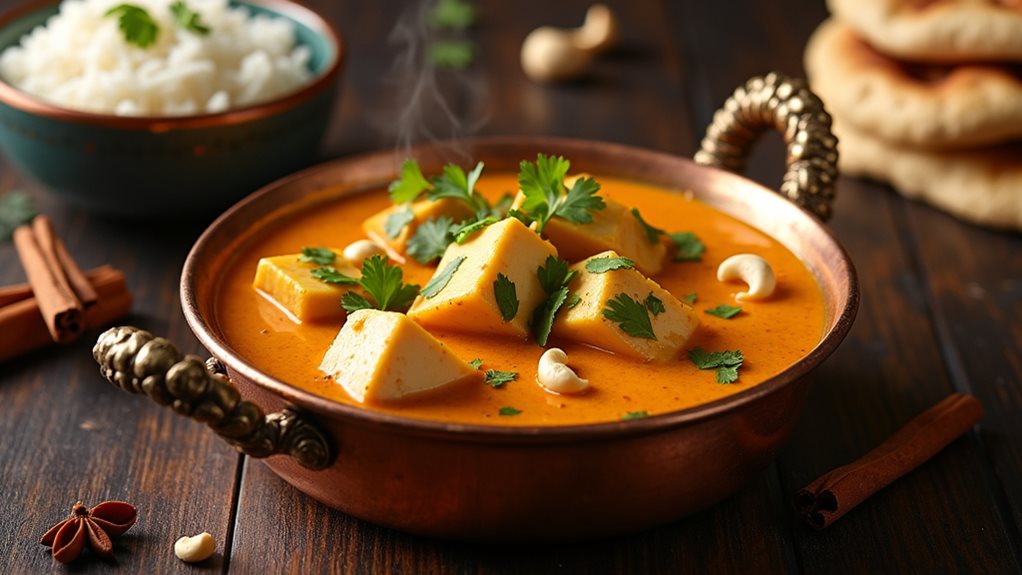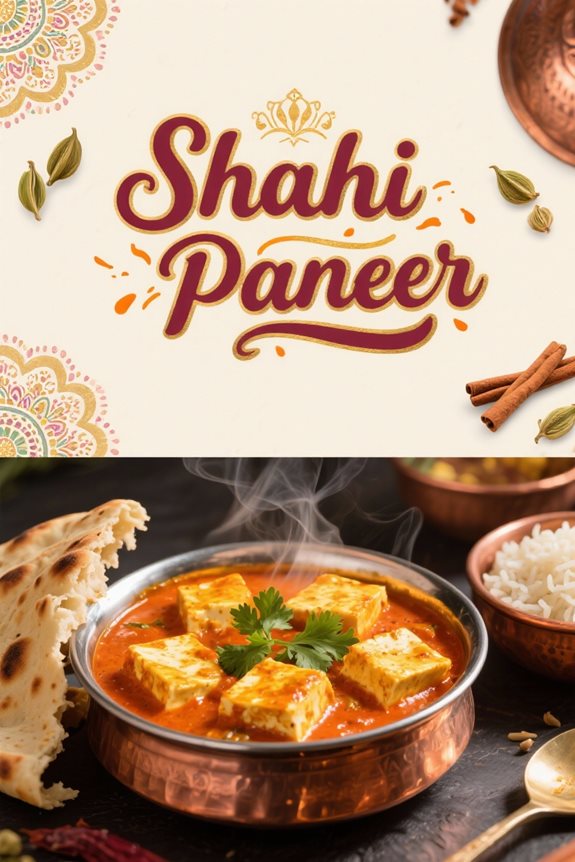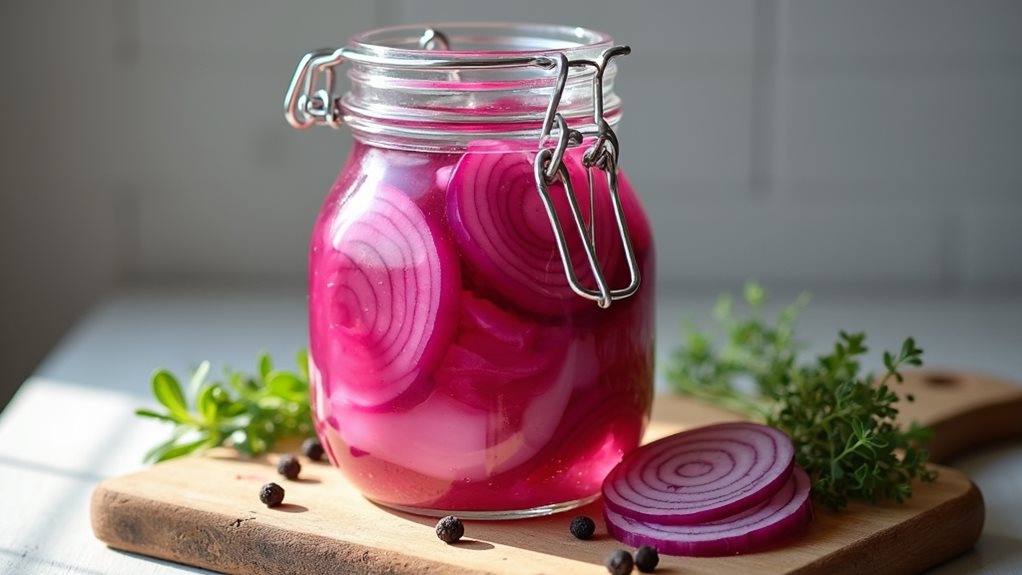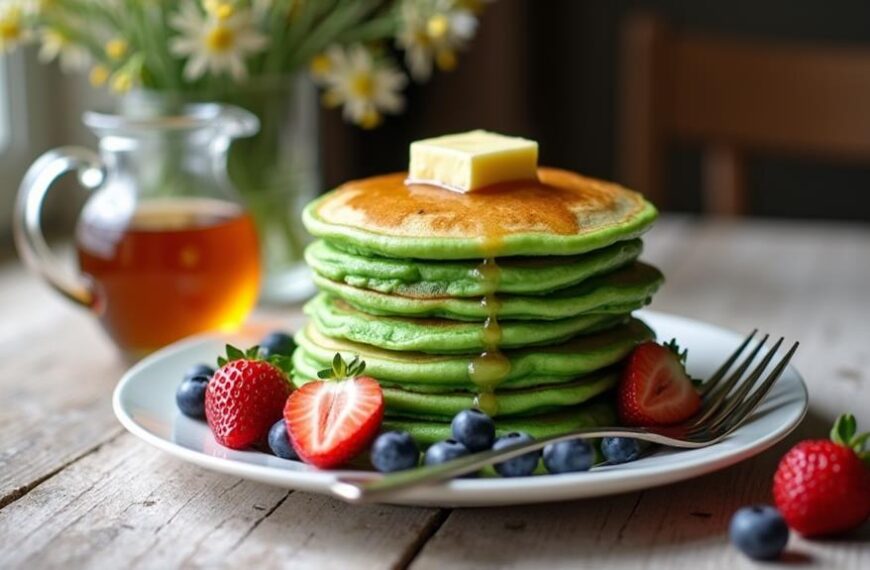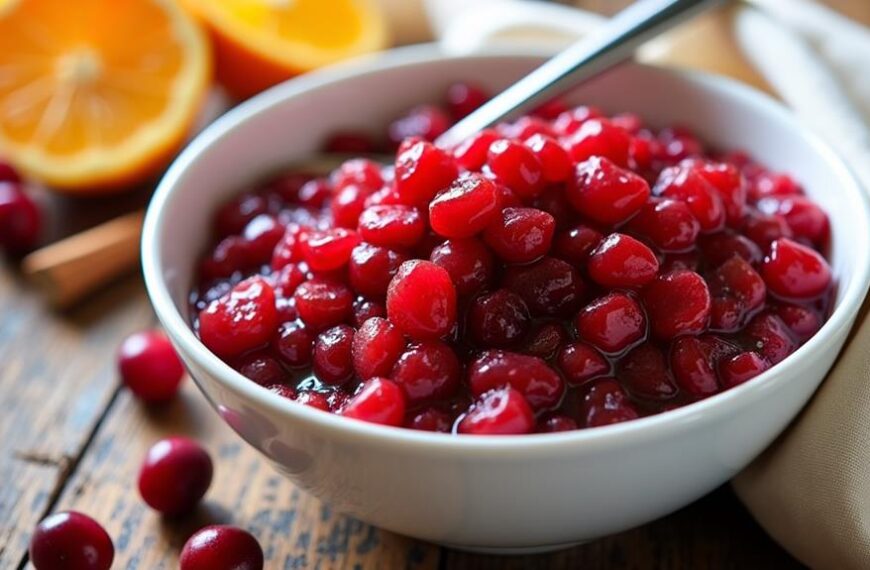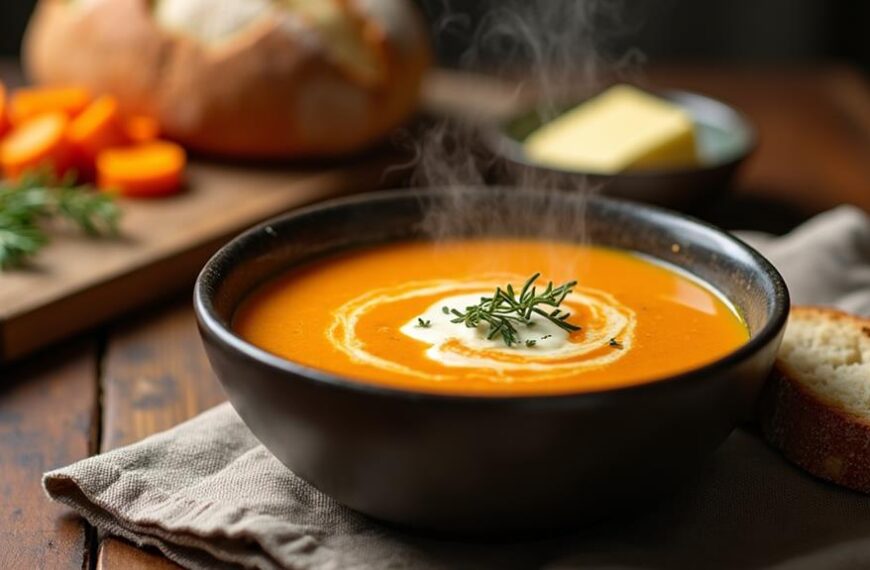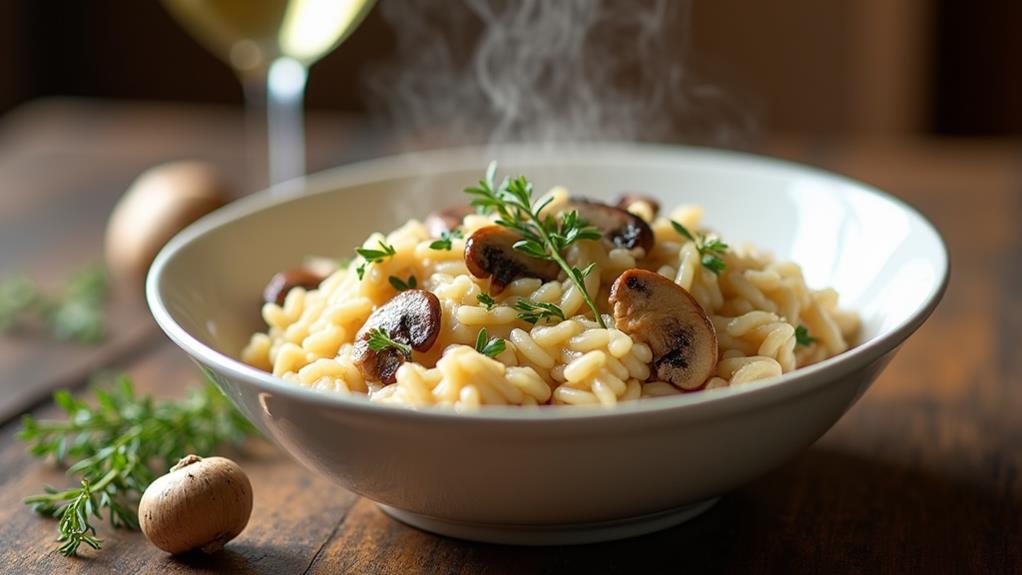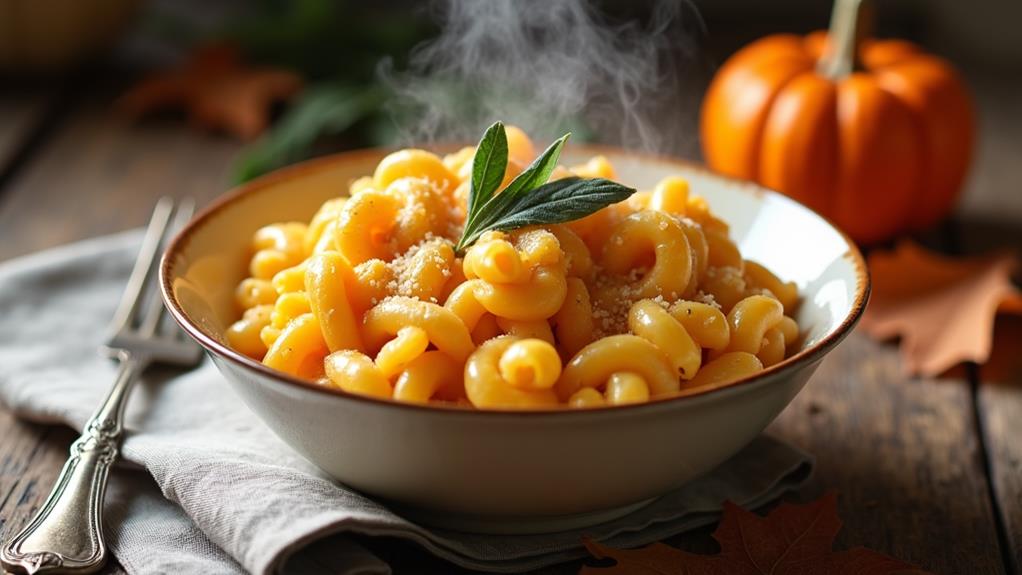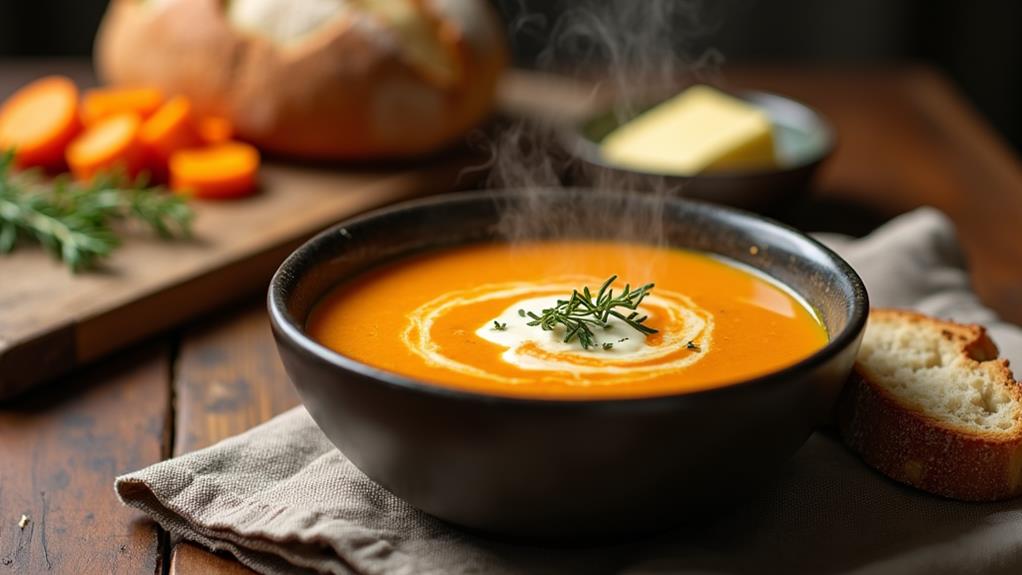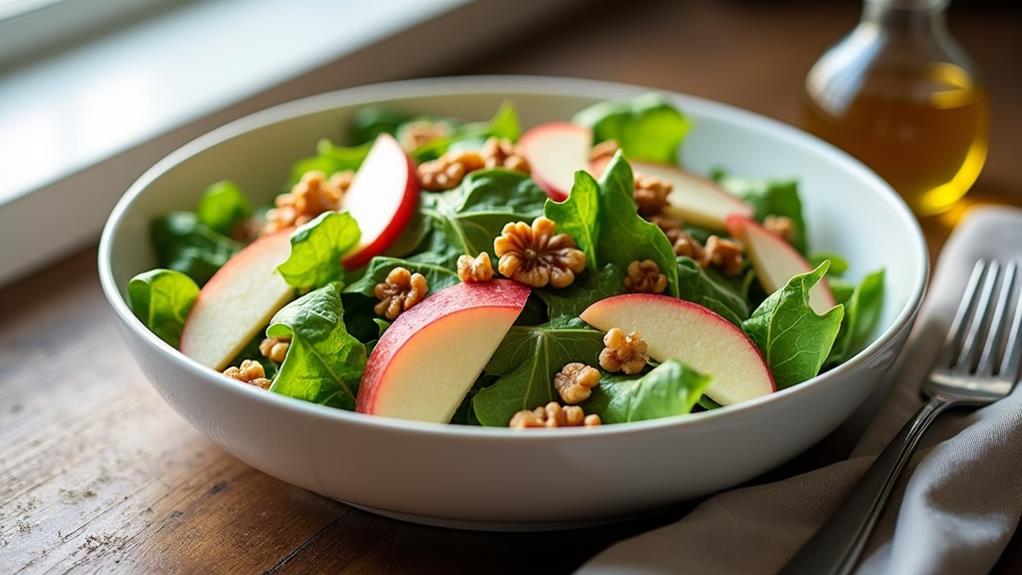I’ve always believed that Shahi Paneer represents the pinnacle of Indian vegetarian cuisine. This luxurious dish combines velvety paneer cubes with a rich, aromatic gravy that’s both comforting and sophisticated. When I prepare it at home, I’m transported to the grand kitchens of Mughal emperors who first enjoyed this “royal cheese” creation. The beauty lies in its perfect balance of creaminess and spice, creating a depth of flavor that will transform your ordinary dinner into a majestic feast.
Key Takeaways
- Shahi Paneer is a luxurious North Indian dish featuring paneer cubes in a rich, creamy tomato-based gravy.
- The dish balances aromatic spices including cumin, coriander, turmeric, and Kashmiri red chili powder.
- “Shahi” means royal, reflecting the dish’s elegant texture and sophisticated flavor profile.
- It’s typically finished with cream and fresh cilantro, creating a velvety consistency.
- Shahi Paneer pairs perfectly with naan, paratha, or basmati rice for a complete meal.
Why You’ll Love this Royal Creamy Paneer
Why does Shahi Paneer continue to reign supreme on Indian restaurant menus worldwide? The answer lies in its perfect balance of rich, creamy texture and aromatic spices that create a luxurious dining experience fit for royalty (which is exactly what “Shahi” translates to).
I’ve found that this dish transforms ordinary paneer cheese into something extraordinary. The velvety tomato-based gravy, improved with cream and warming spices like cumin and coriander, coats each pillowy cube of paneer with remarkable flavor.
You’ll appreciate how the paneer absorbs the sauce’s essence while maintaining its distinctive texture. It’s sophisticated enough for special occasions yet simple enough to master at home.
Whether you’re new to Indian cuisine or a seasoned enthusiast, this royal dish delivers memorable, crave-worthy results every time.
What Ingredients are in Royal Creamy Paneer?
Shahi Paneer is a royal North Indian dish that’s absolutely creamy, rich, and bursting with flavor. The name “Shahi” literally means royal, and once you taste this velvety curry with its tender paneer cubes swimming in a tomato-cream sauce, you’ll understand why it’s fit for kings and queens.
Making this luxurious dish at home is surprisingly simple with the right ingredients, and I’m excited to share what goes into this magnificent creation.
- 2 tablespoons cooking oil
- 1 large onion, thinly sliced
- 4 cloves garlic, minced
- 1 teaspoon ground cumin
- 1 teaspoon ground coriander
- 1/2 teaspoon ground turmeric
- 1/2 teaspoon Kashmiri red chili powder
- 4 tomatoes, pureed
- 1/2 pound paneer, cubed
- 1/4 cup water
- 1 teaspoon white sugar
- Salt to taste
- 1/4 cup cream
- 2 tablespoons chopped fresh cilantro
When shopping for these ingredients, the quality of your paneer makes a huge difference. Fresh paneer has a softer texture and milder flavor that really showcases the rich sauce.
And while Kashmiri chili powder provides that gorgeous red color without too much heat, you can substitute regular paprika with a pinch of cayenne if needed. The cream is non-negotiable, though—it’s what gives Shahi Paneer its signature richness.
Can you imagine this dish without that silky finish? Neither can I.
How to Make this Royal Creamy Paneer
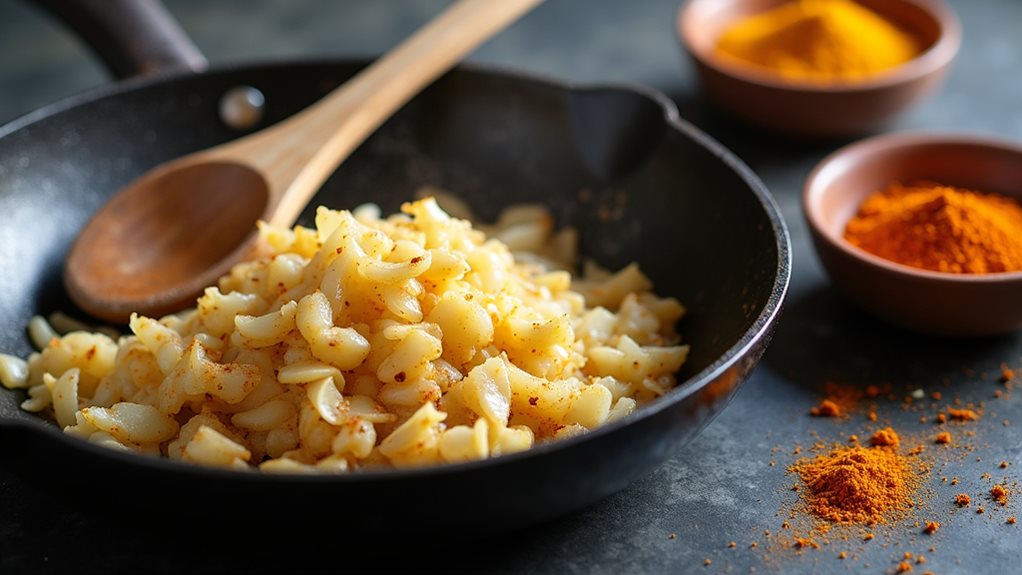
To create this luxurious dish, start by heating 2 tablespoons of cooking oil in a large skillet over medium heat. Add 1 large thinly sliced onion and 4 minced garlic cloves, cooking them until they become soft and develop that gorgeous golden-brown color, about 5 minutes. This aromatic base is what gives Shahi Paneer its depth of flavor.
Next, it’s time for the spice magic—sprinkle 1 teaspoon ground cumin, 1 teaspoon ground coriander, 1/2 teaspoon ground turmeric, and 1/2 teaspoon Kashmiri red chili powder over your onion-garlic mixture. Let these spices bloom in the oil for about 30 seconds, just until they become fragrant. Can you smell that beautiful aroma filling your kitchen?
Now for the saucy part. Pour in the puree from 4 tomatoes and cook until the excess liquid evaporates and you notice the oil separating from the mixture, roughly 3 to 5 minutes. This technique, called “bhunoing,” is vital for developing that rich, authentic flavor.
Gently add 1/2 pound of cubed paneer, 1/4 cup water, 1 teaspoon white sugar, and salt to taste. The key word here is “gently”—we want those beautiful paneer cubes to stay intact, not break apart into a crumbly mess. Let this simmer for about 10 minutes, giving the paneer time to absorb the flavors of your gorgeous sauce.
As a final touch of luxury, stir in 1/4 cup of cream and let it simmer for another 5 minutes, creating that signature silky texture. For authentic Indian cooking with consistent results, consider using an Indian pressure cooker which helps maintain the perfect temperature and pressure for delicate dishes like this one. Before serving, don’t forget to garnish with 2 tablespoons of freshly chopped cilantro for a pop of color and freshness.
The beauty of Shahi Paneer lies in its balance. The creamy richness contrasts perfectly with the warming spices, while the tomato base provides just enough acidity to keep things interesting.
Take your time with each step, especially when cooking the onions and tomatoes—rushing these fundamental stages might leave you with a sauce that lacks depth. And remember, paneer doesn’t need to be pre-fried for this recipe, though some cooks prefer to do so for a slightly different texture.
The result is a dish worthy of its royal name, “Shahi,” perfect for serving with naan or fluffy basmati rice.
Royal Creamy Paneer Substitutions and Variations
While traditional Shahi Paneer delivers unmatched richness and flavor, you’ll be pleased to know that several adaptations can accommodate dietary restrictions or ingredient availability without sacrificing the dish’s royal essence.
For a vegan version, I substitute firm tofu for paneer and coconut cream instead of dairy cream. If Kashmiri chili powder isn’t available, I use regular chili powder with a pinch of paprika to achieve that signature color and mild heat.
When I’m craving variation, I sometimes add green peas or bell peppers for texture and color.
For a healthier spin, Greek yogurt works wonderfully in place of cream. You can also experiment with cashew paste to create an even richer base.
What to Serve with Royal Creamy Paneer
When serving Shahi Paneer in all its creamy, aromatic glory, I’ve found that complementary sides can transform this dish from merely delicious to absolutely memorable.
I always pair it with freshly made naan or flaky paratha to soak up that rich, tomato-based gravy.
Basmati rice, preferably fragrant and fluffy, creates the perfect bed for this royal dish. For a complete meal, I add a simple cucumber raita which provides a cooling contrast to the warming spices.
Consider including a side of pickled vegetables or a crisp kachumber salad for textural variety.
Don’t forget a simple dal for protein balance or, for special occasions, serve alongside vegetable biryani instead of plain rice.
These accompaniments elevate Shahi Paneer’s regal character without overshadowing its distinctive flavor profile.
Final Thoughts
Shahi Paneer stands as one of India’s most beloved dishes, offering home cooks a chance to create restaurant-quality cuisine in their own kitchens.
I’ve found that mastering this rich, creamy curry transforms ordinary meals into special occasions, impressing even the most discerning guests.
Remember that quality ingredients make all the difference—fresh paneer, ripe tomatoes, and authentic spices will enhance your dish beyond the ordinary.
Don’t rush the cooking process; allowing the flavors to develop slowly rewards your patience with remarkable depth.
If you’re new to Indian cooking, this recipe provides an excellent introduction to the cuisine’s fundamental techniques and flavor combinations.
Similar to Harvest Vegetable Soup, this dish celebrates the principle that seasonal ingredients ensure maximum freshness and superior flavor in your final creation.
I encourage you to make this royal dish your own, adjusting the spice levels and creaminess to suit your personal taste preferences.

